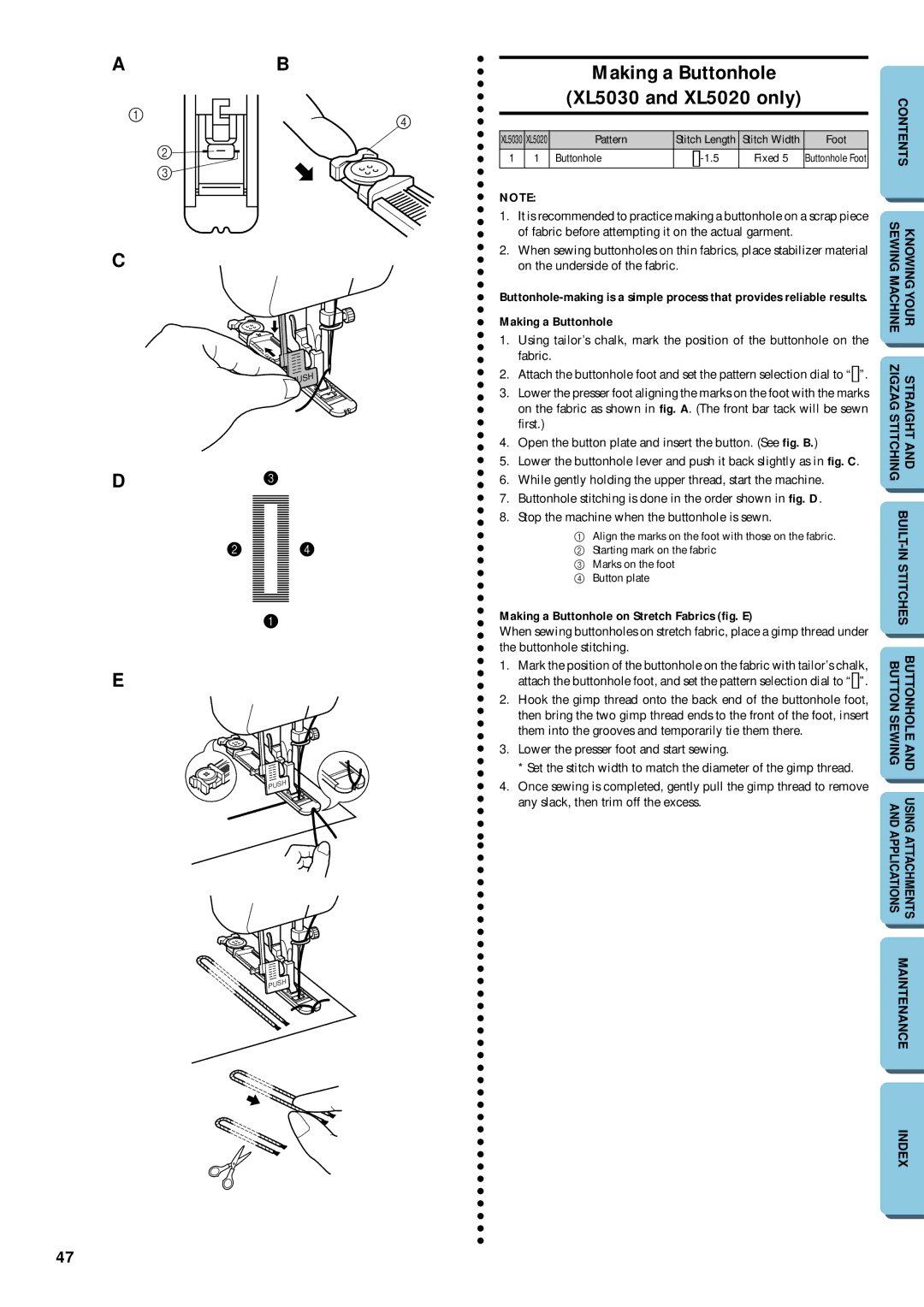
AB
1 ![]()
![]() 4
4
2 –
3
C
PUSH![]()
D3
2 ![]()
![]() 4
4
1
E
PUSH![]()
PUSH![]()
Making a Buttonhole
(XL5030 and XL5020 only)
XL5030 | XL5020 | Pattern | Stitch Length | Stitch Width | Foot | ||
1 | 1 | Buttonhole |
|
| Fixed 5 | Buttonhole Foot | |
|
| ||||||
NOTE:
1.It is recommended to practice making a buttonhole on a scrap piece of fabric before attempting it on the actual garment.
2.When sewing buttonholes on thin fabrics, place stabilizer material on the underside of the fabric.
Making a Buttonhole
1.Using tailor’s chalk, mark the position of the buttonhole on the fabric.
2.Attach the buttonhole foot and set the pattern selection dial to “![]()
![]() ”.
”.
3.Lower the presser foot aligning the marks on the foot with the marks on the fabric as shown in fig. A. (The front bar tack will be sewn first.)
4.Open the button plate and insert the button. (See fig. B.)
5.Lower the buttonhole lever and push it back slightly as in fig. C.
6.While gently holding the upper thread, start the machine.
7.Buttonhole stitching is done in the order shown in fig. D.
8.Stop the machine when the buttonhole is sewn.
1Align the marks on the foot with those on the fabric.
2 Starting mark on the fabric
3 Marks on the foot
4 Button plate
Making a Buttonhole on Stretch Fabrics (fig. E)
When sewing buttonholes on stretch fabric, place a gimp thread under the buttonhole stitching.
1.Mark the position of the buttonhole on the fabric with tailor’s chalk, attach the buttonhole foot, and set the pattern selection dial to “![]()
![]() ”.
”.
2.Hook the gimp thread onto the back end of the buttonhole foot, then bring the two gimp thread ends to the front of the foot, insert them into the grooves and temporarily tie them there.
3.Lower the presser foot and start sewing.
*Set the stitch width to match the diameter of the gimp thread.
4.Once sewing is completed, gently pull the gimp thread to remove any slack, then trim off the excess.
CONTENTS | |
SEWING MACHINE | KNOWING YOUR |
ZIGZAG STITCHING | STRAIGHT AND |
BUTTON SEWING | BUTTONHOLE AND |
AND APPLICATIONS | USING ATTACHMENTS |
MAINTENANCE | |
INDEX
47
